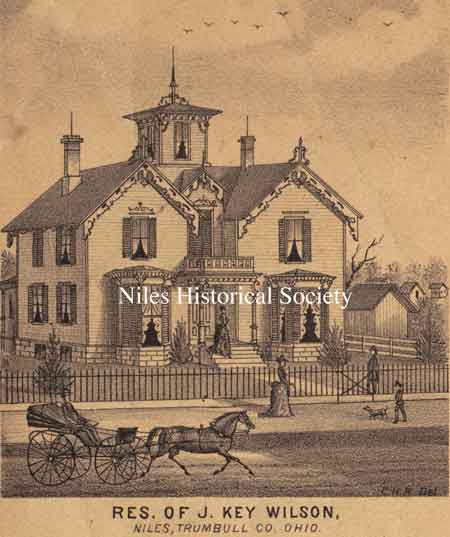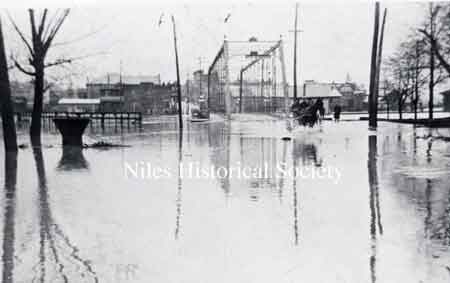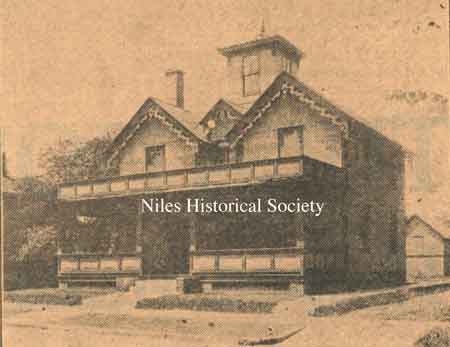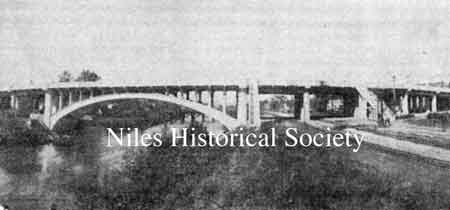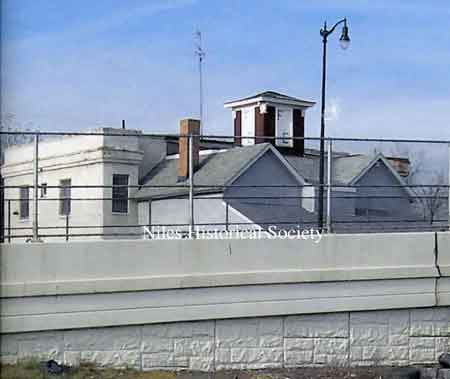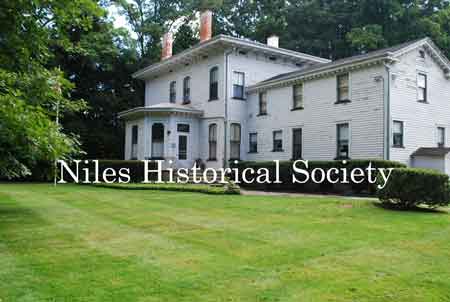
The History of the John Key Wilson Home in Niles, Ohio
Click on any photograph to view a larger image.
To
purchase a high-resolution print of any listed photograph on this page
without the visible watermark, E-Mail
Us
Use the image ID Example: PO1.1023
| E-Mail Us | Phone: 330.544.2143 | Mail: PO Box 368 Niles, Ohio 44446 |
News
Tours
Individual Membership: $20.00
Family Membership: $30.00
Patron Membership: $50.00
Business Membership: $100.00
Lifetime Membership: $500.00
Corporate Membership:
Call 330.544.2143
Do you love the history of Niles, Ohio and want to preserve that history and memories of events for future generations?
As a 501(c)3 non-profit organization, your donation is tax deductible. When you click on the Donate Button, you will be taken to a secure Website where your donation will entered and a receipt generated.
|
John Key Wilson residence
as it appeared in 1874. |
The History of the John Key Wilson Home. Fraternal Order of Eagles - NILES #1476 was established as a not for profit organization in 1898 in the United States of America. In 1998, the Fraternal Order of Eagles, Aerie #1476 located on South Main Street celebrated their 100th anniversary in Niles, Ohio. The planning committee placed an article in the Niles Times requesting readers to share photos, stories from the past and any memorabilia relating to the Eagles # 1476. From the “Pictorial History of Niles”, published by the Niles Historical Society, Barbara Gilmore recognized the house of John Key Wilson. Mr. Wilson resided in the home at 316 South Main Street in 1874. He was born in Scotland and later moved to Niles, Ohio. He married Sarah Porter and had one daughter, Alice Wilson who was born in 1878. Mr. Wilson died in 1888. By comparing the photo and an early picture taken of the Eagles building she realized it was the same building. The roof structure was the same and the twin gables and the copula were all the same. A title search was started to verify if it was the same building. After spending several days at the Trumbull Court House Archives Department and the Warren Library seeking information it was confirmed it was the same building. The Sanborn Fire Insurance Map 1867-1970 and the Niles Census taken in 1870-1880 were also very helpful. In September 1919, the house was sold to the Eagles, #1476 and an addition was added on to the back of the house consisting of large ballroom upstairs and large social quarters downstairs. |
| |
|
| The Iron Bridge as it appeared in the 1913 Flood with the photograph taken from approximately where the John Key Wilson residence was located on the south side of the Mahoning River. P01.1016 |
|
| |
|
This photograph with the large upper and lower porches and back additions shows the new Eagles Building, ca 1919. This photograph appeared in the 1834-1934 Niles Daily Times Centennial Edition. |
|
| |
|
|
P01.70 The Viaduct Story.
|
The Nile Bridge project was first suggested some time prior to 1924. A consulting engineer was hired to estimate the cost of the bridge and assist the county engineer is preparing plans which were presented in 1926. Three prominent real estate men were appointed to make an estimate of the damage to the adjoining properties that in any way might be involved in the work of construction. The general plans were approved and adopted in
1927 and a permit was secured from the War Department for the
construction of the bridge over the Mahoning River which was still
classified as a navigable stream. Notices were served upon the
property owners in April 1927 and they were notified to file their
claims. The total cost of the bridge construction and settlement
of property claims was $627,000. The Iron Bridge was a flat steel bridge which spanned the Mahoning River. Main Street sloped down to the bridge beginning at State Street and past Water Street. On the South Side, First Street was level with the bridge. The buildings along both sides of Main Street would either be destroyed or access the new Viaduct with a higher entrance on the second floor. The Eagles Building is a good example of the height change that would occur in the viaduct construction. On September 16, 1932 the first load of material
arrived for the construction of the Viaduct. On September 19,
work started on the temporary bridge and it was opened October
20th, at which time, this old iron bridge was torn down. The new
Viaduct was dedicated on October 28, 1933. |
| |
|
| The all over purpose of the Eagles is “People helping People” and they have bound together throughout the years to help pave the way for a better life for all citizens. Seven Presidents of the United States have been associated with the Eagles organizations. Supporting family values and strong
law enforcement, the local Eagles have collected thousands of dollars,
through the years donating to Spina Bifida, Homes for Kids, Mosquito
Creek Fishing Tournament and other needed projects.
|
|
| |
|
